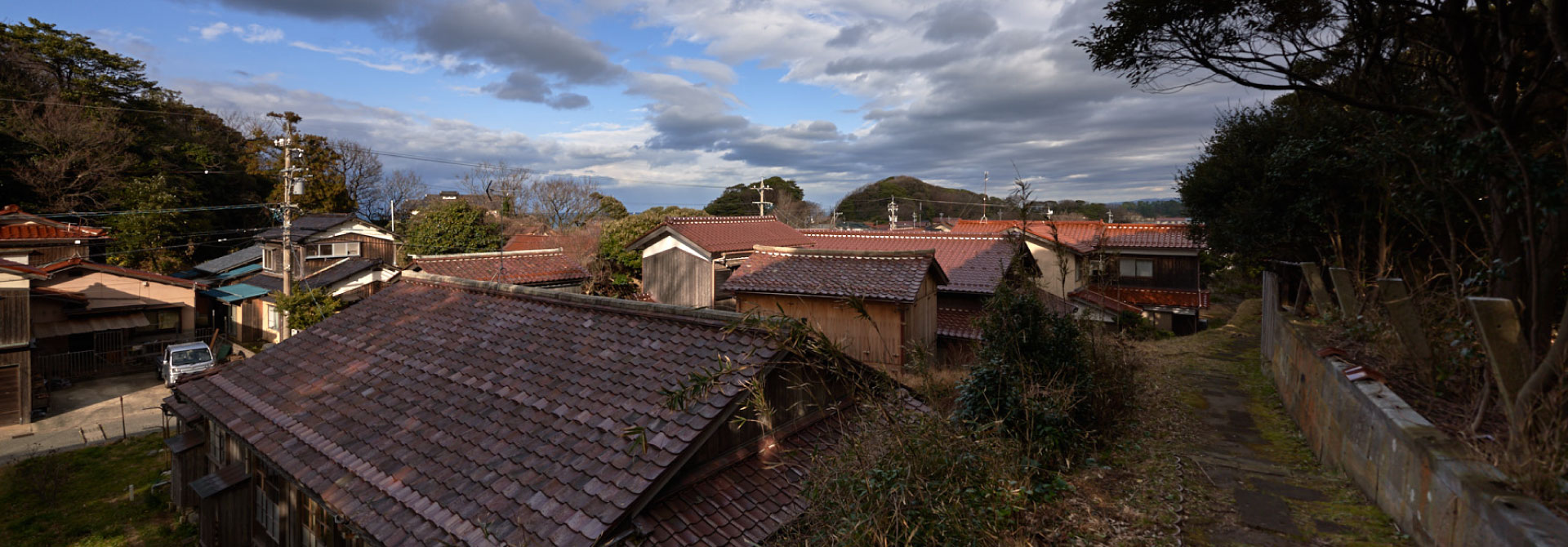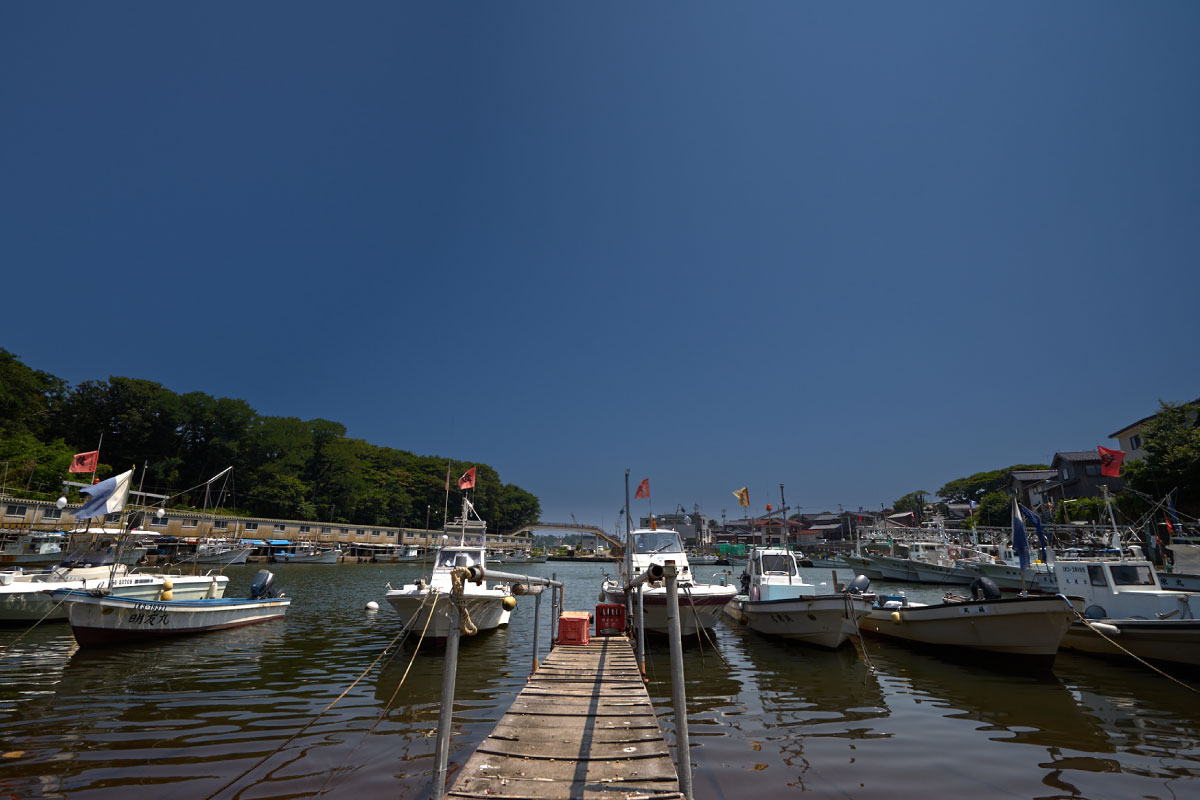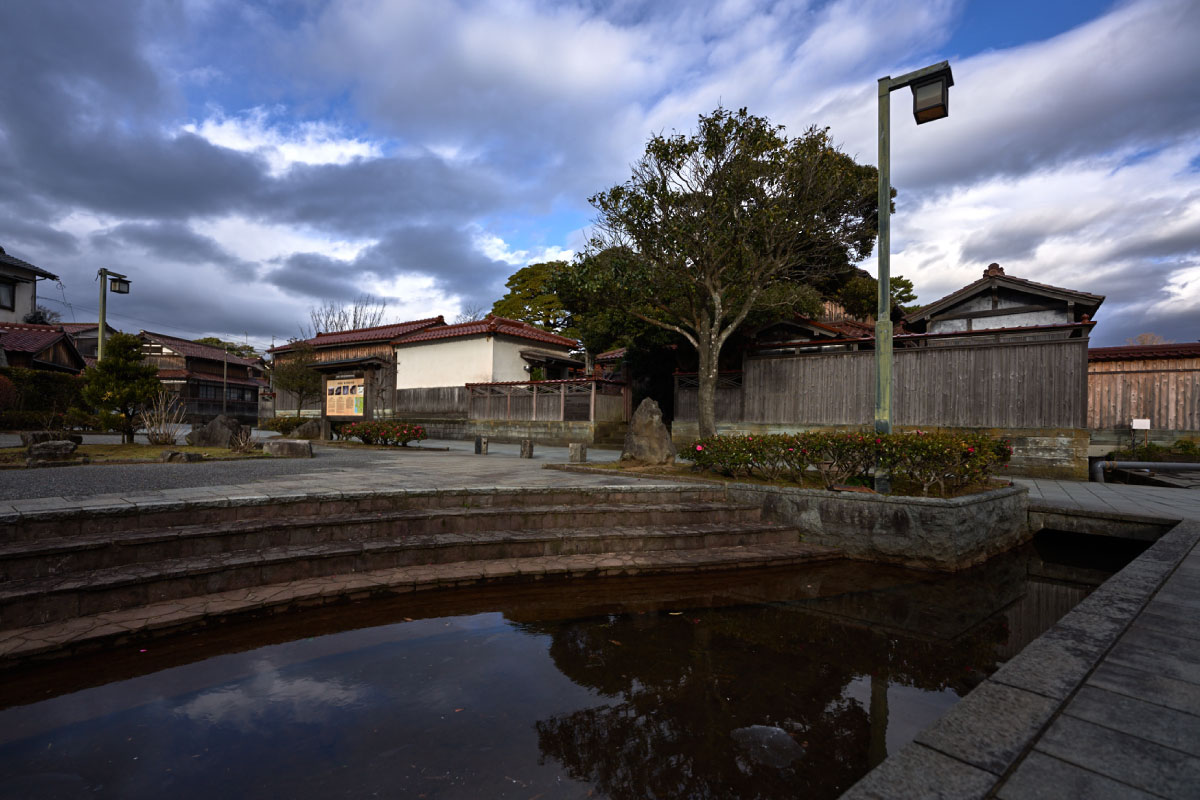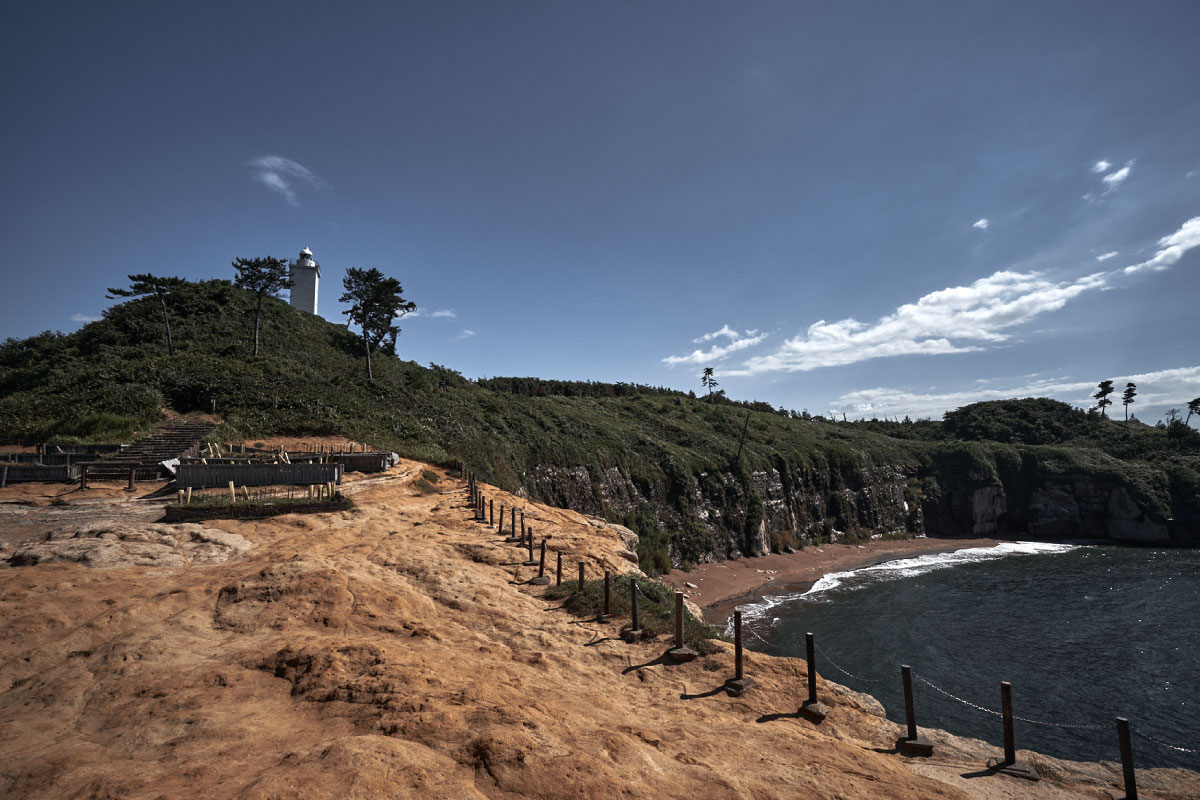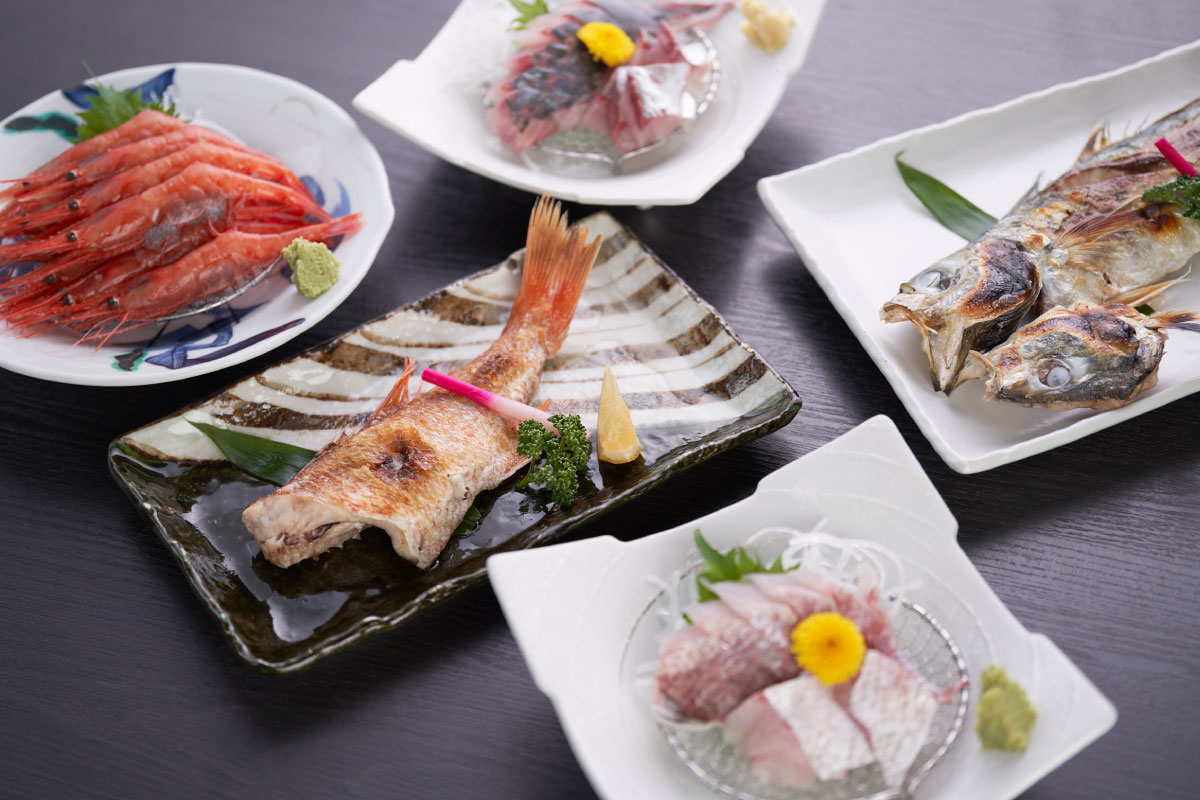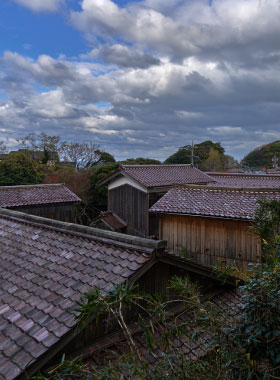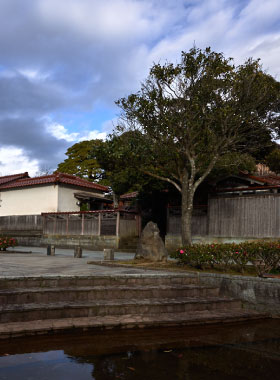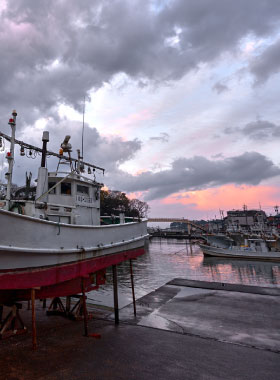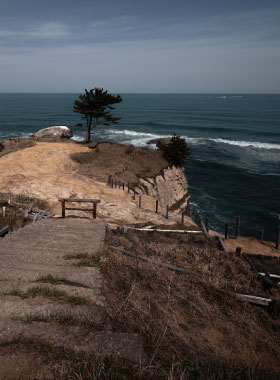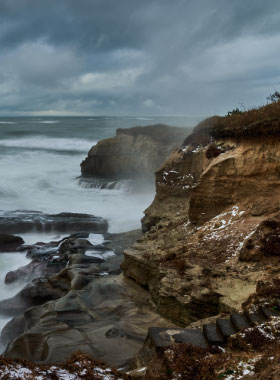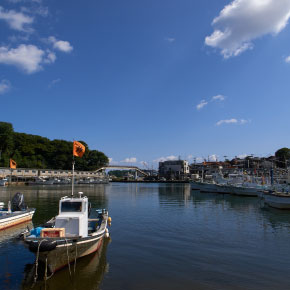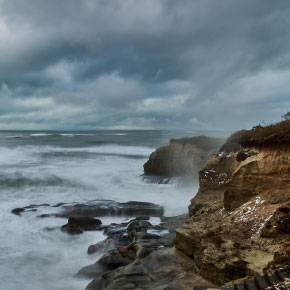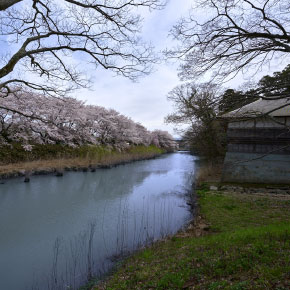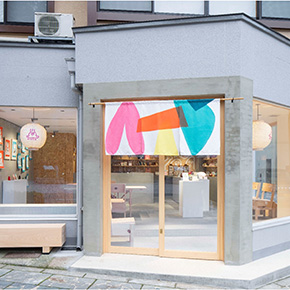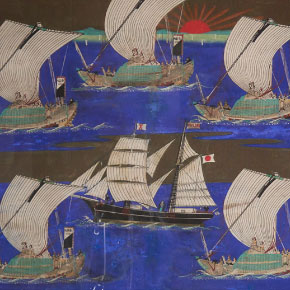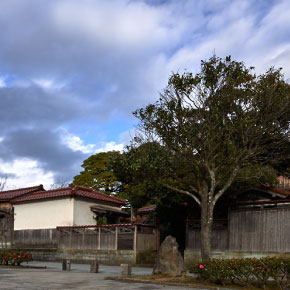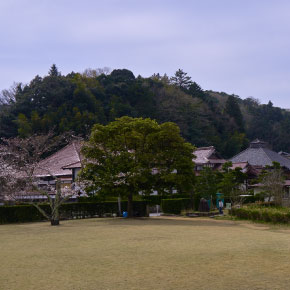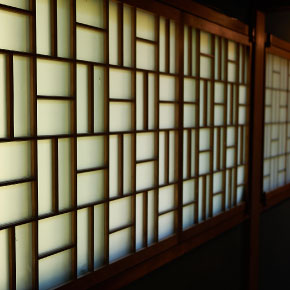A Coastal Retreat with a Rich History
On a section of Hokuriku’s rolling coastline perches the charming fishing village of Hashitate. From its port, the Sea of Japan glistens in brilliant blue as it stretches outwards endlessly. On windy days the spray of distant waves spatters across sea walls, and a salty breeze whistles around the streets.
Despite its small size, Hashitate is still an important fishing town and is famed for its delectable snow crab and sweet shrimp. These, along with other seasonal delicacies, fresh from the previous day’s catch are served up in the fishmongers and restaurants lining the town’s main thoroughfare.
Set back from the port is a small, sheltered harbour. Here, rows of tug boats and fishing trawlers rest, gently jostling each other with the ebb and flow of the tide. A high bridge crosses the harbour’s mouth and leads to a secluded path. Running behind a row of corrugated fishing huts it gives a furtive, behind-the-scenes glance at a traditional fishing industry, as nets, pots and other fishing kit are scattered about.
Beyond the harbour though is where visitors come face to face with Hashitate’s great maritime legacy. Here, within a labyrinth of winding backstreets, are the remnants of the town’s prosperous past: the lavish mansions that once belonged to the prominent Kitamaebune ship owners.
The Kitamaebune
Kitamaebune, which literally means ‘north route ships’ was a shipping route (and also the name of the vessels) that ran from Osaka to Hokkaido, along the Sea of Japan coastline. From around 1770 to 1890, the Kitamaebune trade was Japan’s main industry. Ships travelled from port to port buying and selling commodities such as kelp, herring and other sea products.
Kitamaebune shipping magnates amassed substantial wealth from the trade. Those from Hashitate supported the local community by donating much of their fortune to the Daishoji Domain. As a result, Hashitate enjoyed huge economic growth, and the once unassuming fishing village became the wealthiest in Japan.
Nowadays, the red-tiled roofs of the Hashitate residences are a tell-tale sign of this affluent past. A stand-out feature, they shimmer regally across the townscape when the sun beats down. Beneath the tiles are huge, magnificent properties. There are around 30 Kitamaebune residences all together, but the most notable are the preserved homes which now serve as museums.
Historical Mansions
Built in 1876, the impressive Kitamaebune Ship Museum is built with the classic reddish tiles of Hashitate, and wooden exterior walls reclaimed from old ships. It houses a variety of fascinating artefacts including navigation tools, furniture and hand-written documents from the time.
Padding from room to room on the soft tatami floor and inhaling the sweet scent of the wooden beams, visitors can truly immerse themselves in the history of the place.
Zorokuen is another stately home-turned-museum, and another Kitamaebune relic. Containing an array of interesting antiques, including various pieces of Kutani-yaki tableware, it is an atmospheric place where the imprints of the past can be felt.
A small seating platform in front of large, floor to ceiling windows allows visitors the chance to sit and contemplate Zorokuen’s lush and enchanting garden.
Clifftop Vistas
Bookending Hashitate are two rocky outcrops known as Cape Amagozen and Cape Kasa no Misaki. Both offer breathtaking cliff-top views of the swirling sea and over the coastline.
Cape Amagozen is a pine-clad headland to the east of Hashitate’s port. A small walking path runs its rim moving in and amongst the trees and out onto the cliffs. In these exposed pockets the mighty waves can be seen in the distance, rushing in towards the shore. At one point the path opens out onto a small, cliff-top grassy pasture, sheltered on either side by the pines. Benches here allow visitors to rest and look back upon the pretty little town of Hashitate in all its glory.
Cape Kasa no Misaki offers an exhilarating immersion into nature. Standing at the edge of the escarpment, feels like the edge of the world, as the tempestuous sea crashes on the rocks below. Looking out towards the coastline, craggy cliffs carved by the waves, and secret, pristine coves dominate the view. On clear days rugged, natural peninsulas can also be spotted protruding from the land, in the distance. From Kasa no Misaki, visitors can also take a 4km nature trail running along windswept cliffs and through beautiful pine forests.
